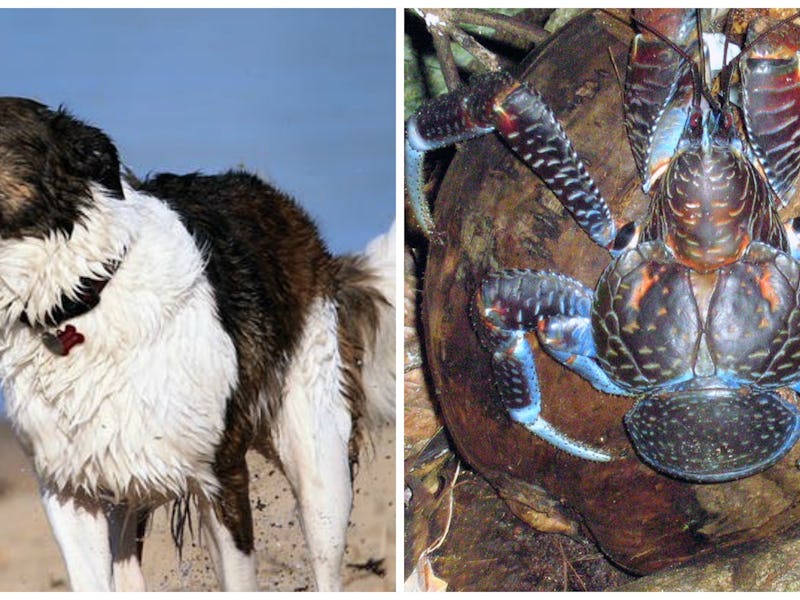Dogs May Finally Find Amelia Earhart if Huge Crabs Don't Eat Them
Stay safe, pups.

Bone-sniffing dogs are being sent to the remote Pacific island of Nikumaroro on a quest to find Amelia Earhart’s bones, National Geographic reported on Wednesday. But the valiant puppers, part of the International Group for Historic Aircraft Recovery’s 13th attempt to find Earhart’s remains, will have to keep their eyes peeled for Nikumaroro’s insidious threat: Three-foot-long, nine-pound killer crabs.
Earhart’s disappearance is one of America’s longest-enduring mysteries, making it a fairly compelling reason to expose the dogs to crabby peril. On July 2, 1937, the 39-year-old aviatrix and her navigator Fred Noonan set off from Lae, New Guinea and headed for Howland Island using the era’s newest tech: sun, stars, and paper maps. As everyone knows, they never arrived at their destination — but it’s long been rumored that she crash-landed on Nikumaroro. The bone-sniffing dogs may be the most promising strategy for finding her remains yet — if the puppers can survive the perils of the island.
The Good Boy Brigade (not their official name) has undergone rigorous training at the Institute for Canine Forensics. They have experience with burials nine feet deep and 1,500 years old — but have yet to met a giant, bloodthirsty crab.
'I have become death, destroyer of worlds.' - this coconut crab
Unfortunately for the doggos, their humans aren’t too worried. Archaeologist Fred Hiebert told National Geographic that he thinks the crabs won’t be a problem — and may even be an advantage to the search:
“The crabs are our friends,” says Hiebert. Voracious scavengers, they drag booty — the remains of coconuts, say, or rats — back to their burrows. If their stash includes human bones, “that would provide the environment to retain those decomposition smells.”
But that’s probably exactly what the crabs want you to think, Fred!
The coconut crabs that live on the death island are the largest arthropods on the planet, weighing as much as a sack of potatoes or three-month-old child and being the same length across as a baseball bat or a guitar. To grow this big, they eat each other’s exoskeletons (or sometimes their own) to extract calcium.
They are known to be voracious eaters, consuming pretty much anything — though its go-to snack is, of course, coconuts. But they have also been known to eat kittens and chickens, and it’s possible they ate even Amelia Earhart herself. In 2016, research published in PLoS One hinted at the reason why the crabs might be such proficient hunters: Their claws’ pinching ability has a force of 3,300 Newtons, which is the strongest known pinching force among all crustaceans (and comparable to the biting force of most terrestrial animals).
It’s not clear whether Hiebert and the other humans in charge of the bone-sniffing dogs have any plans for dealing with their potential encounter with the crabpocalypse — cattle prod, anyone? — or whether they’re really sure the coast is clear.
So stay safe, puppers. We salute you.